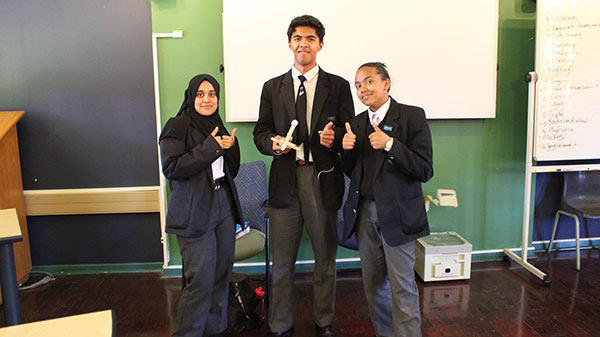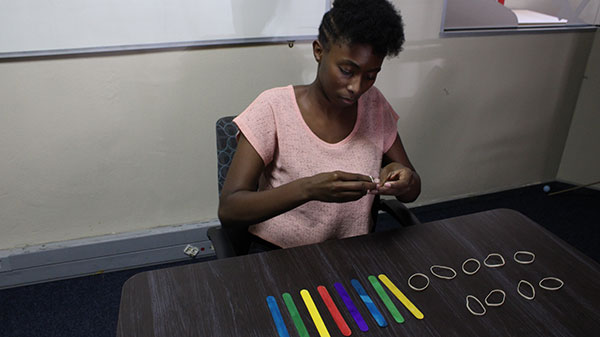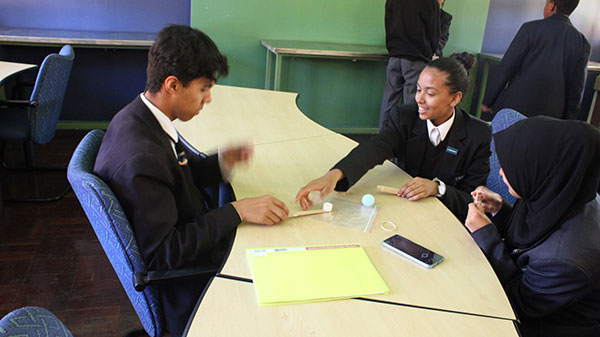Next-Gen: Catapulting Design to New Heights
Student Competition Profile: GE Foundation’s Next Engineers Global Challenge

Winning Johannesburg team: Zia, Talha, & Faiqa, building their catapult and posing after.
Latest News
July 24, 2023
In 2021, the GE Foundation launched Next Engineers, a global college- and career-readiness program to increase the diversity of young people in engineering across four locations: Cincinnati, OH, and Greenville, SC, U.S.; Johannesburg, South Africa; and Staffordshire, UK. Next Engineers encompasses three age-dependent programs: Engineering Discovery, Engineering Camp and Engineering Academy.
Next Engineers is led by GE Foundation and coordinated by FHI 360, a nonprofit human development organization dedicated to improving lives in lasting ways by advancing integrated, locally driven solutions. Jessica Baker, communications specialist, FHI 360, answered our questions about the program. Here’s our conversation.
Digital Engineering: Can you provide an overview of the design competition, how it came to be, and the intent of the program? Who will be participating or who has participated? How many participants have you had or are you expecting? Any demographics of participants?
Jessica Baker: We initially developed the challenge as a way of launching the @NextEngineersGlobal on Instagram. Our goal was to facilitate cross-site engagement via a social media platform. Next Engineers has four global sites [that] engage students ages 13 [to] 18 in hands-on engineering activities. By providing all four sites with the same challenge, students had the opportunity to compete with and see entries from students around the world. This served to foster a sense of global community as well as to inspire students to aim high in their engineering designs. Volunteers and facilitators were also invited to participate to add to the challenge. A total of 12 student teams submitted entries, as well as four staff members from our Johannesburg community partner, Protec. Submissions were approximately 50/50, boys and girls.

DE: Can you tell us about some of the designs that are part of the event and how they came to be?
Baker: All participants were challenged to build a catapult with only popsicle sticks and elastic bands. Participants settled on a few variations, including square bases, triangular bases, cross bases and different heights of stacked popsicle sticks for leverage. One of the winning teams used a cross base, while the other used a triangle—both managed to build very stable models, which successfully transferred the potential energy of the elastic bands into the ping-pong balls they were firing. Both winning teams exceeded 12 feet.
DE: Can you provide some examples of what the event has produced or what you expect it to produce?
Baker: Next Engineers challenges students to be creative and innovative with very limited resources as they explore the engineering design process. The cross-site catapult challenge for Engineers Week is no exception—students apply what they’ve learned about prototyping, testing and iterating to build the best catapult models they could using only 10 popsicle sticks and 10 elastic bands. Beyond the usual Next Engineers activities, this Engineers Week challenge pushes students’ creativity as they compete with students from around the world.

Subscribe to our FREE magazine, FREE email newsletters or both!
Latest News
About the Author
Jim Romeo is a freelance writer based in Chesapeake, VA. Send e-mail about this article to [email protected].
Follow DE





